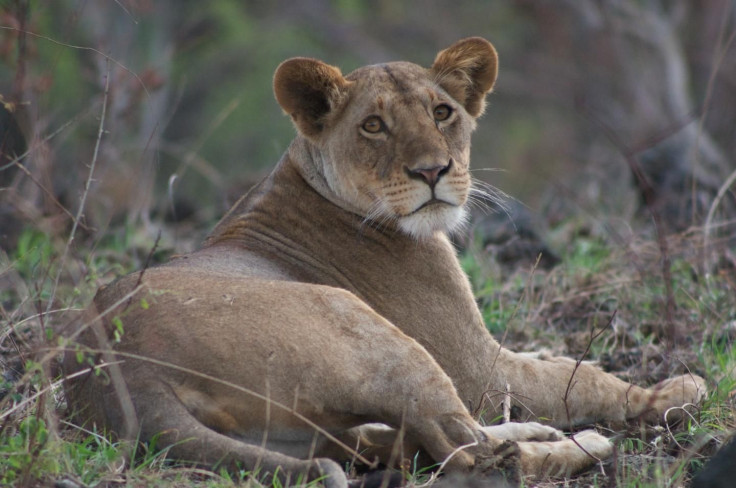Modern Lions May Share Fate Of Extinct Saber-Toothed Tigers From The Ice Age

Saber-toothed tigers went extinct around the end of the last Ice Age but their demise still has value today: It can teach us how to save modern big cat species like the African lion before they too live only in history books.
Scientists used the long-gone felines as a model for today’s animals, focusing specifically on food to find out how declines in available prey have affected big cats in the past and what we can expect in the future. Their study in the journal Ecography found African lions and the only recently identified Sunda clouded leopards are particularly at risk, along with leopards and cheetahs, “in parts of their range.”
Read: Look Inside an African Lion’s Mouth
“Many contemporary species of large felids feed upon prey that are endangered, raising concern that prey population declines [defaunation] will further threaten felids,” the authors wrote.
If certain saber-toothed cats — four types were examined in this study — and American cheetahs, American lions and cave lions were still alive today, they would only have about a quarter of the food sources they used to have because all the other species of prey went extinct or can no longer be found in their historical ranges. Of the ones that are extinct, the University of Sussex explains, “human pressure” played a role in their destruction.
“This devastating loss of prey species was a major contributing factor to the extinction of these big cats,” according to the university, one of a few with scientists working on the project. “If all the currently threatened and declining prey species within big cat natural ranges were to go extinct, only 39 percent of the African lion’s prey and 37 percent of Sunda clouded leopard’s would remain.” That would spell trouble for those big cats.
African lions are already listed as a vulnerable species by the World Wildlife Fund, with just 20,000 living in the wild, even though they have no animal predators. “African lion numbers have plummeted by over 40 percent in the last three generations, due to loss of living space and conflict with people,” the WWF said. But the cats “play a crucial role in keeping a healthy balance of numbers among other animals, especially herbivores like zebra and wildebeest — which in turn influences the condition of grasslands and forests.” Sunda clouded leopards are vulnerable because of habitat loss and human-caused problems as well. They are found on southeast Asian islands, a species of clouded leopard separate from but related to the ones in mainland Asia.
Meanwhile, the saber-toothed cats known for their large upper canines were found across the globe and are distantly related to modern felines. The most famous of that animal group was the Smilodon, which lived in the Americas, was about the size of an African lion and went extinct thousands of years ago, at the end of the Ice Age.
“Where prey species have, or are likely to become extinct, this poses a serious risk to the big cat species which feed on them and we now know this is the continuation of an unhappy trend, which began during the last Ice Age,” Sussex’s Chris Sandom said in the university press release. “We need to buck this Ice Age trend once and for all and to reinforce the urgent need for governments to protect both big cat species and their prey.”
See also:
© Copyright IBTimes 2024. All rights reserved.





















